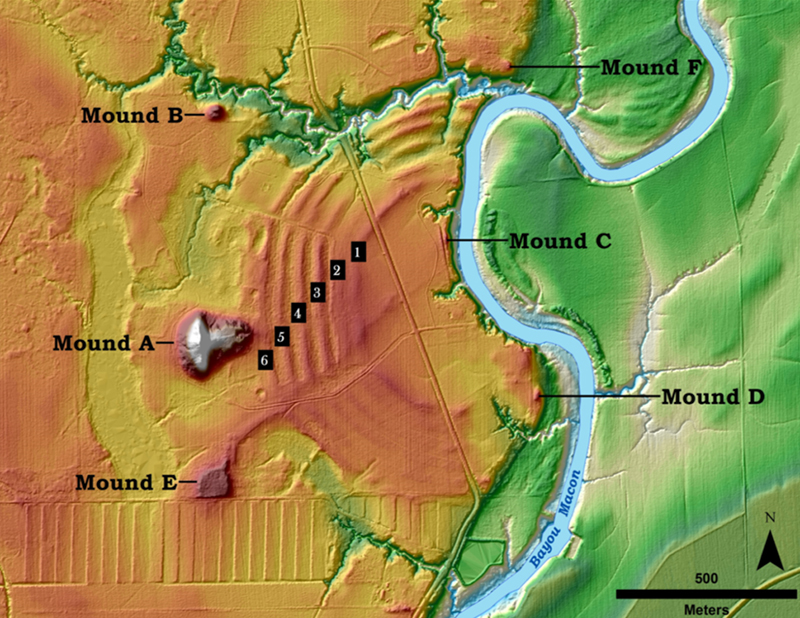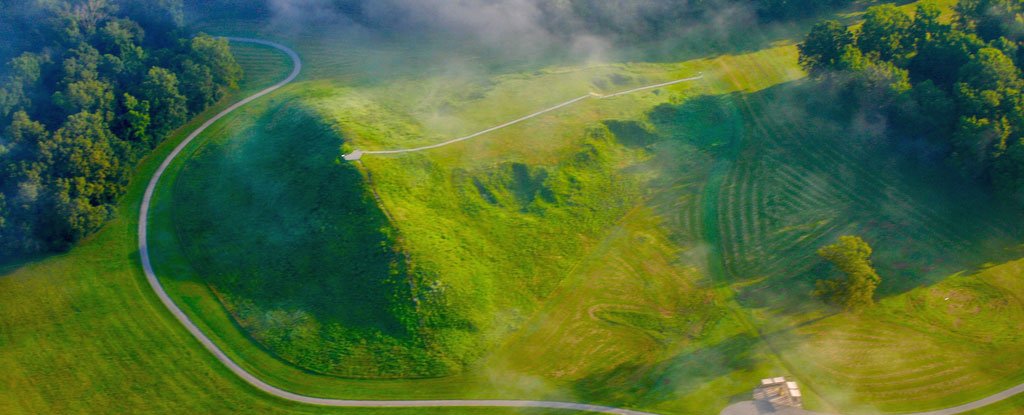Products You May Like
Poverty Point in northern Louisiana is one of the first US civilizations on record, inhabited by a community of Native Americans as early as 1700 BCE. In a new study, researchers have shown these inhabitants to be highly skilled engineers, rather than the simpler hunter-gatherers they’re often portrayed as.
The massive earthen structures put up at Poverty Point – in just a few months or weeks – are evidence that the people who lived here thousands of years ago very much knew what they were doing in terms of engineering and building, the researchers say.
Even today the center of the Poverty Point World Heritage Site is dominated by a mound that rises more than 20 meters (66 feet) above the ground, and millions of cubic meters of soil would have had to be shifted and piled in order to create these mounds – they are not straightforward building projects.
 The Poverty Point site. (Washington University in St. Louis)
The Poverty Point site. (Washington University in St. Louis)
“One of the most remarkable things is that these earthworks have held together for more than 3,000 years with no failure or major erosion,” says archaeologist and the study’s first author Tristram Kidder from Washington University in St. Louis, Missouri.
“By comparison, modern bridges, highways, and dams fail with amazing regularity because building things out of dirt is more complicated than you would think. They really were incredible engineers with very sophisticated technical knowledge.”
The key point of the new research is that these mounds were put up quickly. The researchers used techniques including radiocarbon dating, magnetic measurements, and microscopic soil analysis to confirm that it was constructed in an “exceptionally rapid” time frame.
That’s shown by the layering of the soil used for building, the new study reveals. There is hardly any sign of weathering between the levels of the mounds, which means they weren’t left exposed to elements for any significant amount of time.
And they’re still standing – despite the steady amounts of rainfall that have swept in from the Gulf of Mexico over thousands of years. It seems the Native Americans used a clever combination of different soil types (including clays, silts, and sand) to make structures that would stand the test of time.
“Similar to the Roman concrete or rammed earth in China, Native Americans discovered sophisticated ways of mixing different types of materials to make them virtually indestructible, despite not being compacted,” says Kidder.
“There’s some magic there that our modern engineers have not been able to figure out yet.”
Pre-modern hunter-gatherers weren’t thought to have really gone in for politics, but the constructions at Poverty Point would have needed people in leadership roles as well as a large labor pool, according to Kidder and his colleagues.
The people of the time wouldn’t have been able to use modern tools, domesticated animals or even wheeled carts to put the mounds together, from excavating the vast amount of soil to getting it moved to the correct location.
The site, which Kidder says may have been an important stop of religious pilgrimages, was abandoned between 3,000-3,200 years ago, most probably due to climate change and flooding. Now the impressiveness of the buildings that still remain – and the skill of the builders – has been properly acknowledged.
“We as a research community – and population as a whole – have undervalued native people and their ability to do this work and to do it quickly in the ways they did,” says Kidder.
The research has been published in Southeastern Archaeology.
